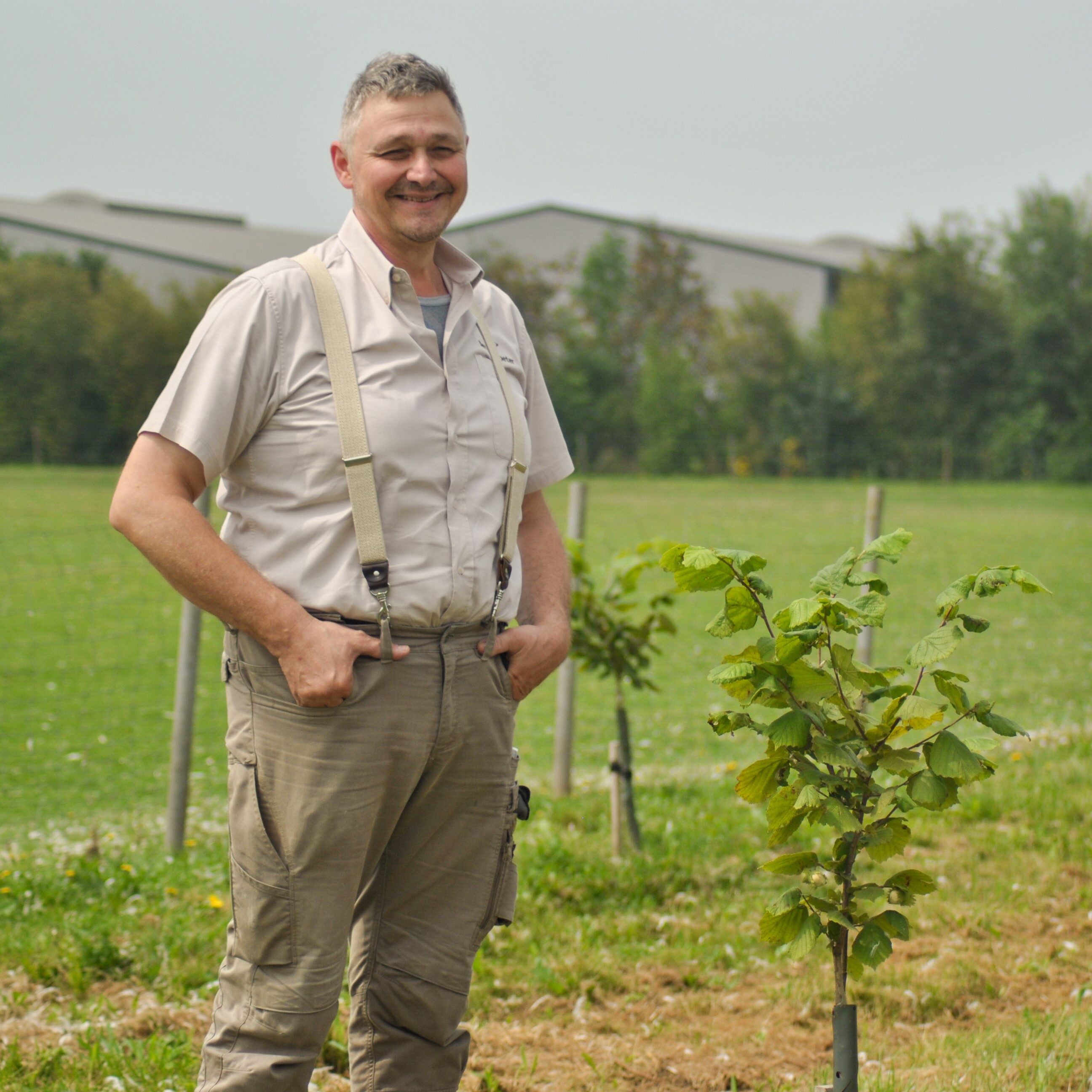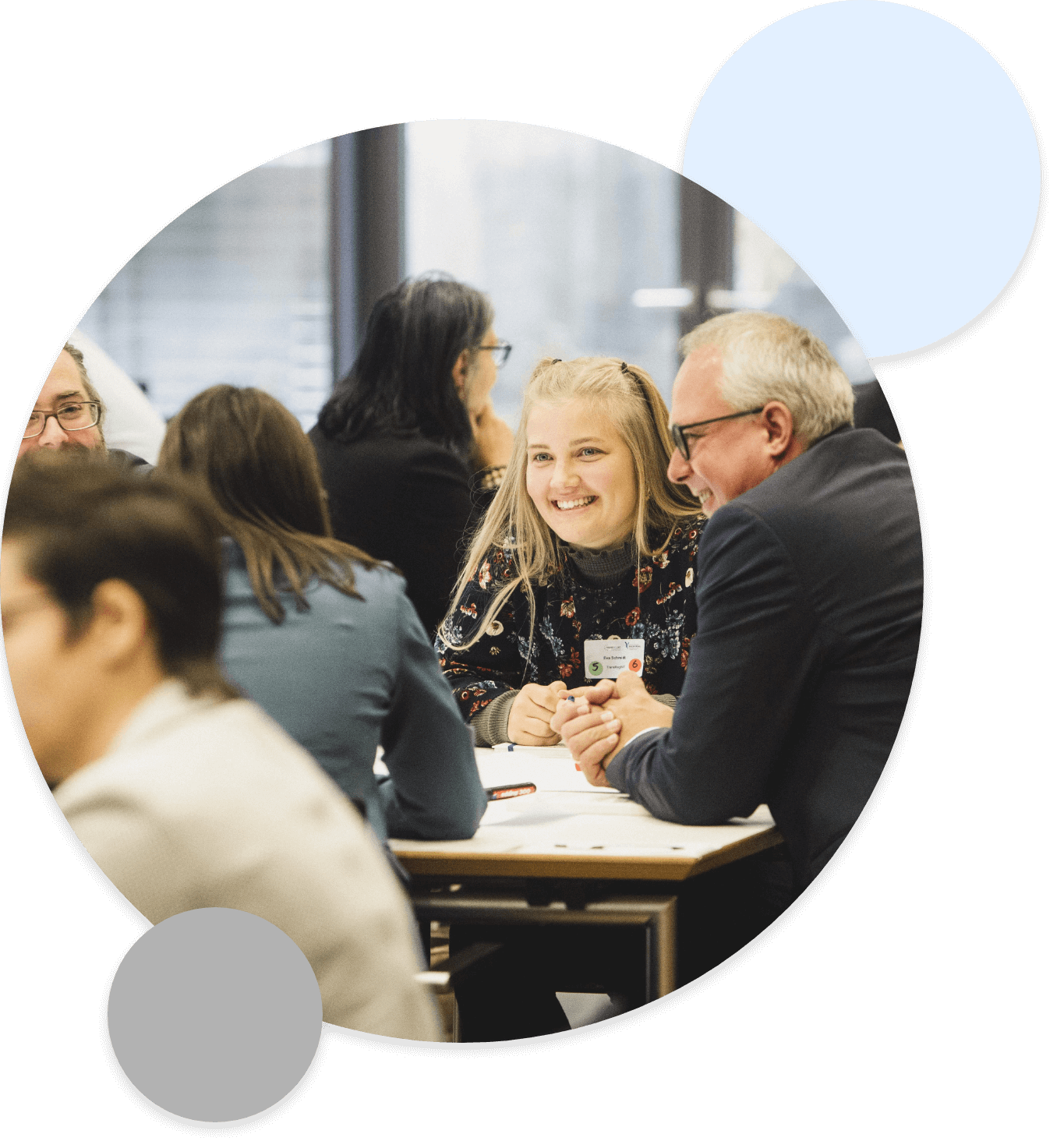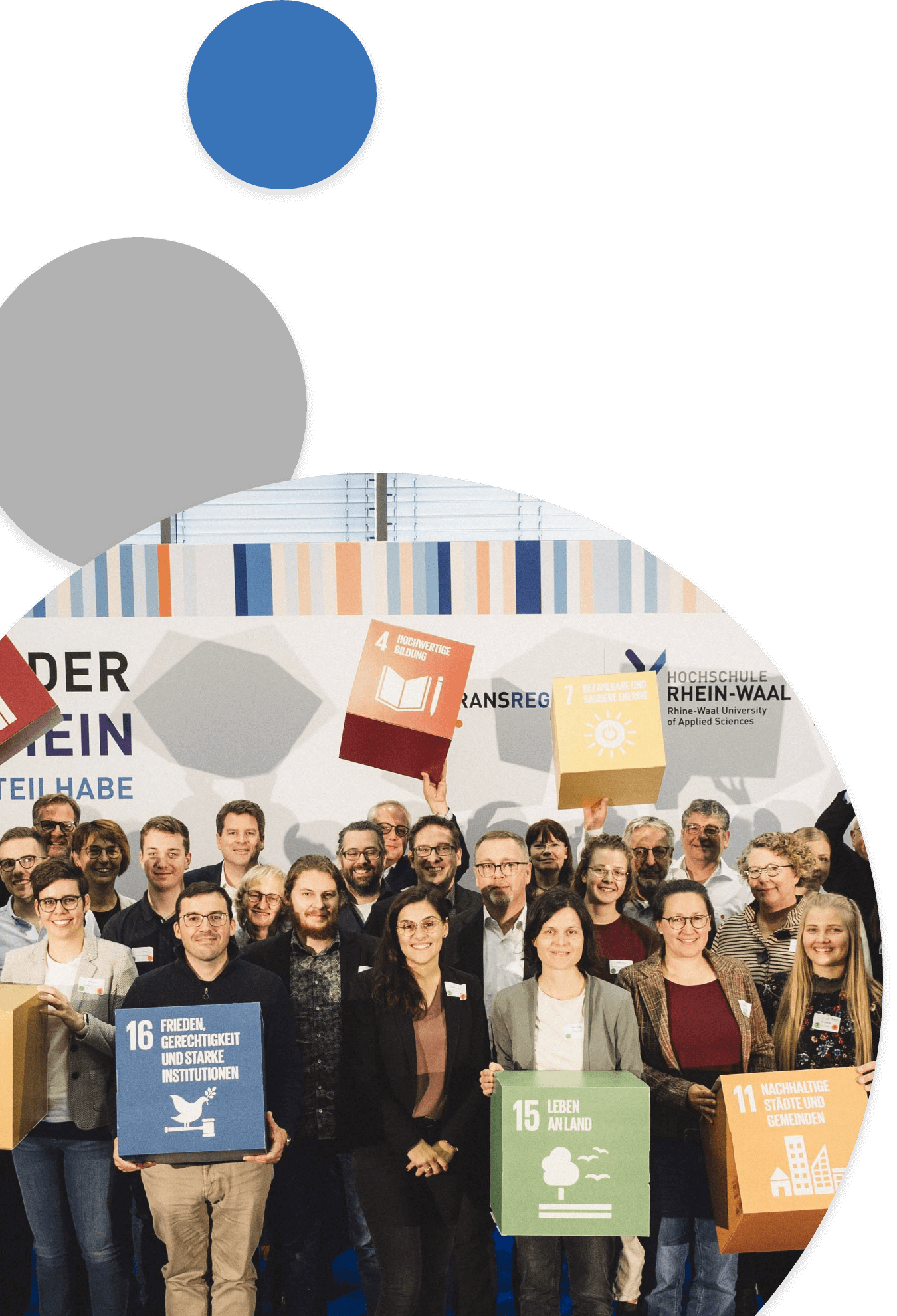
Agroforestry for geese – The Gänsepeter from Rommerskirchen
Our TransRegINT project aims to make the Lower Rhine more sustainable. Now our team from the Agroforestry Living Laboratory has put out feelers to the Rhineland, more precisely to Rommerskirchen. Peter Eßer, better known as “Der Gänsepeter”, lives in the municipality, which belongs to the Rhine district of Neuss, with his family, several thousand geese and other poultry.
Lots of eggs, roasts and down
The Gänsepeter sells goose eggs, poultry and poultry products, as well as down duvets under the regional name “Gillbach”, the name of the small river that flows through Rommerskirchen-Ramrath. He sells his products not only in his own farm shop, but also in various farm shops in the region and at local retailers. He offers Germany-wide shipping for his goose eggs, as goose eggs are a regional speciality limited to the Lower Rhine and Rhineland. However, they are a popular alternative to hen’s eggs for people suffering from allergies. He is currently incorporating the experience he has gained here into the planning of an online shop.
Impact compensation regulation
Peter Eßer had to provide compensation measures for the expansion of his stables and the construction of a new hall, which houses offices, a slaughterhouse and a butcher’s kitchen. This is because the Federal Nature Conservation Act requires the farmer to make equivalent improvements if nature and the landscape are encroached upon, as happened here.

He started this in 2022: The roof of the laying goose shed was greened, a small meadow orchard was planted and hazelnut trees were planted in another area. He enjoyed the conversions and began to work more intensively with woody plants. He then read a report about our Agroforestry Living Laboratory, was immediately “super interested”, as he recalls, and sought contact. His idea: even more woody plants for his land in the form of agroforestry strips, but scientifically supported by our project. On 2 August, he signed the cooperation agreement with Dr Ana Kreter and Jannis Menne from the Agroforestry Living Laboratory team during a tour of the farm.
Trees for the next generations
In addition to various nut trees, Peter Eßer has planted fruit trees. Some varieties are more of playing around, he explains. He has planted stone fruit such as apricots, peaches, plums, mirabelle plums and greengages for his own consumption. He would like to process and sell other types of fruit in the future. “I’m actually planting for my grandchildren,” he laughs. “Because it will be a few years before the trees produce an economic yield.” He experiments a lot with different varieties, liaises closely with the Biologische Station im Rhein-Kreis Neuss e.V. and notes: “I wanted regionality, old varieties, but due to climate change, many varieties no longer work. On the one hand, the fruit trees are a hobby of mine, but as an economically viable business, I also need high-yielding fruit varieties.”
First agroforestry
He sees the trees on the farm as being of aesthetic value, but he has not only planted the trees on green strips along the buildings to enhance the farmyard area, but also partly on the geese’s grassland. And thus took the first step towards an agroforestry system without realising it. An agroforestry system is the combination of woody plants with arable crops and/or livestock farming on one area. This is what it looks like in the case of the Goose Peter: He has planted walnut trees in a meadow that serves as a poultry run for the groups of laying geese.
“The trees have a very practical use: They will provide shade in a few years’ time,” explains Peter Eßer. He has planted hazelnut bushes in another meadow. Here, chickens and, from autumn onwards, ducks will look after the green space and keep pests away.
Cooperation with TransRegINT

The cooperation with our Agroforestry Living Laboratory is about creating an agroforestry system on several larger areas: Five hectares of grassland for fattening geese are to be planted with trees. Peter Eßer wants to use the trees to create a structure that will encourage the geese to spread out over the area. This would allow the nutrients, i.e. the goose faeces, to be scattered over a large area rather than just being distributed at certain points.
A small challenge for the farmer, as geese like to eat the bark of young trees. A wire about one metre high, also known as a manure pit grid, has to be installed around the trees for this purpose. And yet, “Geese are curious and resourceful, we’ve already experienced quite a few things here,” laughs the goose peter.
Peter Eßer has many different ideas in mind for the realisation, and the large areas also offer a multitude of possibilities. The expertise from the Agroforestry Living Laboratory will now be incorporated into the planning. One thing is certain: The geese should benefit. In addition to the shade already mentioned, another advantage of agroforestry systems is wind protection. Geese do not like easterly winds. It is even said that wind from the east has a detrimental effect on laying performance. Hedges, on the other hand, are not an option: there is too great a risk of foxes digging their burrows near hedges or martens setting up home.
Even if animal welfare is the primary concern, the economic benefits of agroforestry strips would be advantageous. Here, too, there are different ideas. Fruit and nut trees are now plentiful. One consideration is the cultivation of poplars as energy wood.
Public relations work is also important to Gänsepeter. He wants to raise awareness of the need for woody plants in landscaping and agriculture. And then there is the question of planning security: on the one hand, the agricultural use should be preserved. Another question that concerns him: what happens if the next generation takes a ‘U turn’ and the trees are no longer needed for farming? Would they be allowed to remove the trees again?
Jannis Menne, a research assistant at the Agroforestry Living Laboratory, is now looking forward to the collaboration:
“Gänsepeter is a real poultry expert who not only knows his way around geese, but also ducks, chickens and turkeys. It is therefore very interesting for me and the team to have a location for poultry with him and to be able to show how agroforestry and poultry work together.”




Kommentare